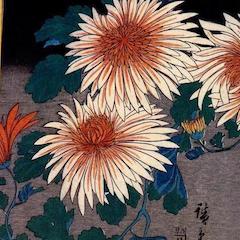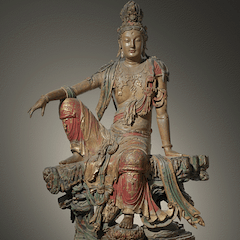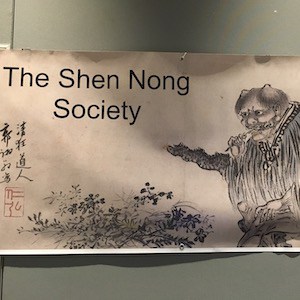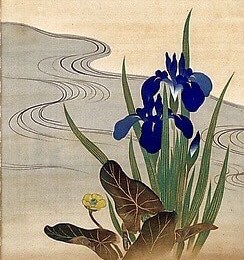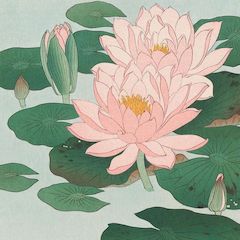Apr 2, 2019 | Herbal Medicine
You are unauthorized to view this page. Please login using the form below or click the button to see your membership options. Membership...Mar 12, 2019 | Acupuncture, Herbal Medicine
You are unauthorized to view this page. Please login using the form below or click the button to see your membership options. Membership...Mar 9, 2019 | Herbal Medicine, unprotected
Welcome to this short series of conversations from the Shen Nong Society’s conference. You’ll find here some conversations with participants of this day long gathering, and more in-depth conversations with some of the presenters. We will start with Kevin...Feb 19, 2019 | Herbal Medicine
You are unauthorized to view this page. Please login using the form below or click the button to see your membership options. Membership Options Username Password Remember Me Forgot...Feb 12, 2019 | Acupuncture, Herbal Medicine
You are unauthorized to view this page. Please login using the form below or click the button to see your membership options. Membership...Feb 5, 2019 | Acupuncture, Herbal Medicine
You are unauthorized to view this page. Please login using the form below or click the button to see your membership options. Membership...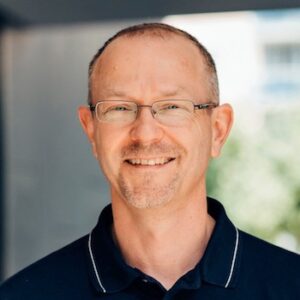
Andreas has been working as an acupuncturist in his own clinic near Munich, Germany, since 2008. Originally, he earned a PhD in psychology, conducted research, and published on behavior and communication in Asian cultures. In 2009, he graduated in Chinese Medicine from the European Institute of Oriental Medicine in Munich. Since 1996, he has made regular visits to South Korea to learn Qigong and traditional Korean medicine.
From 2004 to 2010, he completed training in Korean Hand Acupuncture at the Koryo Sujichim Institute in Seoul. He received additional education and clinical training in Korean medicine with various teachers and doctors, including at Kyung Hee University in Seoul and Busan National University. In recent years,
Andreas has studied Saam and Sambu acupuncture primarily with Dr. Yoo-Ong Jung, Vice President of the Korean Society of Saam Acupuncture Therapy. Andreas has been teaching Saam acupuncture since 2015. He is the (co-)author of “SaAm Acupuncture Textbook: Korean Four-Needle Technique,” published by Müller & Steinicke in Germany.
Title:
Advanced Saam Acupuncture: Combining Saam strategies “freestyle” & tailoring point combinations to constitution
Summary:
This presentation will have two parts. First, we consider the flexible use of the Saam four-needle technique, which is now performed by an increasing number of acupuncturists in Korea and has moved away from a relatively rigid application of the predetermined point combinations. Here, multiple four-point combinations can be selected simultaneously in one treatment, and only one, two, or three points from the prescribed four-points can be applied to build a hierarchy of treatment strategies. We will consider possible criteria for selecting strategies and points.
Second, we will discuss how to individualize the orthodox Saam point combinations by changing some of the points to better fit the strategy according to the patient’s constitution or pathology. For this, we will discuss the basics of Dr. Kim, Hong-Gyeong’s theory of triple Five-Element-characteristics of the Shu Transport points, his constitutional theory and how this can be applied to the Saam point prescriptions.
In This Presentation We Will:
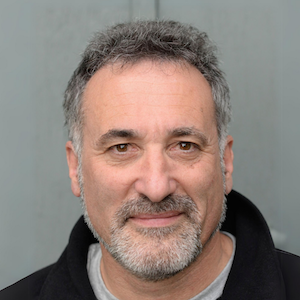
Daniel graduated from the New England School of Acupuncture in 1999. He has been in private practice in Charlottetown, Prince Edward Island, Canada since then. He founded and chairs the Association of Registered Acupuncturists of Prince Edward Island.
For twenty years, Daniel’s clinical work centered around Japanese palpatory approaches, primarily those in the Nagano/Matsumoto lineage (but also including Keiraku Chiryo), expanding into an integration he discovered with Ren Ying Cun Kou pulse diagnosis. This work involved what he calls a reverse engineered ‘palpate first, ask questions later’ approach. More recently, Daniel has found himself in a radical clinical transformation via the elegant Saam fusion of Zhou Yi trigrams, 5 Phases and Six Levels.
Daniel marvels at the fact that even after two decades in practice, every day is novel, new and fascinating.
Title:
Intelligence and Infrastructure: Saam and the Border
Summary:
We will explore the unique potency of Saam acupuncture to enliven the process of clinician development, from the didactic beginnings of technical repetition to the deep archetypal essence connection.
Most of us have access to two major streams of Saam lineage, the teachings of Sunim Doam via Toby Daly and those of Hong Gyeong Kim. We will use the synthesis of these two streams to explore the theme of borders, boundaries and space.
How does the patient experience and manage the inside / outside relationship? What gets in? What stays out? What is the influence of sense of space? And how can Saam be used to serve these issues? The Shao Yang / Jue Yin pairs (SJ/Liver and PC/GB) and the Tai Yang system (UB/SI) will be featured.
We will illuminate a key distinction between Infrastructure (walls and border crossings) and Intelligence (data-gathering). Cases from clinic will be used throughout the presentation.
In This Presentation We Will:
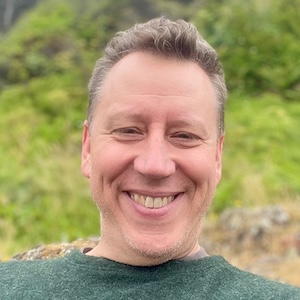
David founded Red Earth Acupuncture and Method Herbs near Atlanta, GA. He received his MSOM from AIMC in Berkeley, CA in 2007.
Early at AIMC he began studying with the Iwashina Anryu (aka ‘Dr. Bear’), continuing to study with and assist Dr. Bear teach until his passing in 2022.
David developed a modular system, reproducing Zhang Zhong Jing’s formulas as concentrated extracts in their original dosages and ratios. This led him to the study and use of traditional Sheng Fuzi pao zhi in formulas.
David was introduced to classical method through the late Taiwanese master Ni Haisha and his brother Ni Boshi. He enrolled in ICEAM with Arnaud Versluys in 2011, becoming a Diplomate in 2013, then a Clinical Fellow in 2015. In 2022 he began teaching the Fukushin classes, and in 2024, became a clinical supervisor.
David has two children, attends Atlanta Soto Zen Center, and teaches Shorinji Kempo.
Title:
Saam and its Clinical Place within the Wu Yun Liu Qi Cosmology
Summary:
In this class we explore the classical and clinical relationship between the Heavenly Stems (天干), Earthly Branches (地支) and Six Qi (六氣). Saam holds unique place in the cosmology of Chinese Medicine, by utilizing the relationship between the Five Phases and Six Qi (六氣) to rebalance disharmony within a Yin Yang Six Qi relationship.
In this lecture we explore classical underpinnings of the Saam model in the Su Wen, and its broader clinical relationship between the Great Movements and Heavenly Stems (五運天干) and Earthly Branches (地支).
Our objective is to gain a cleaner understanding of when and why to use the relational, Five Movements; environmental, Six Qi; or material, Earthly Branches models in your practice.
In This Presentation We Will:
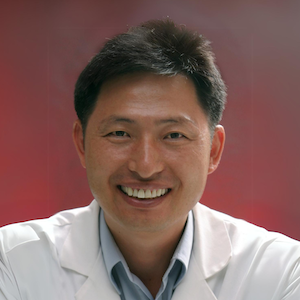
Andreas has been working as an acupuncturist in his own clinic near Munich, Germany, since 2008. Originally, he earned a PhD in psychology, conducted research, and published on behavior and communication in Asian cultures. In 2009, he graduated in Chinese Medicine from the European Institute of Oriental Medicine in Munich. Since 1996, he has made regular visits to South Korea to learn Qigong and traditional Korean medicine.
From 2004 to 2010, he completed training in Korean Hand Acupuncture at the Koryo Sujichim Institute in Seoul. He received additional education and clinical training in Korean medicine with various teachers and doctors, including at Kyung Hee University in Seoul and Busan National University. In recent years,
Andreas has studied Saam and Sambu acupuncture primarily with Dr. Yoo-Ong Jung, Vice President of the Korean Society of Saam Acupuncture Therapy. Andreas has been teaching Saam acupuncture since 2015. He is the (co-)author of “SaAm Acupuncture Textbook: Korean Four-Needle Technique,” published by Müller & Steinicke in Germany.
Title:
Summary:
In This Presentation We Will:
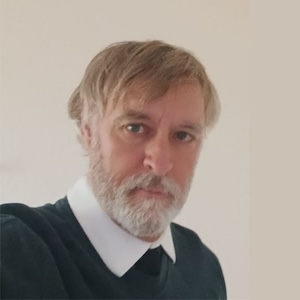
Evan Mahoney is a Doctor of Acupuncture and Oriental Medicine having obtained his degrees from Samra University and Emperors College in 2011. He specializes in the treatment of pain using VST and Kinetic Acupuncture and Saam Acupuncture for all other conditions. Dr. Evan emphasizes a meditational approach in treatment with Saam, coaching the patients to meditate on the acupuncture points.
Since 2013 he has been conducting research on the Interpretation of Dreams based on Saam Acupuncture’s Three Levels of Human Needs. He is currently practicing acupuncture in Southwest Florida.
Title:
Saam Acupuncture’s “Organ Centered Consciousness”
Summary:
Saam Acupuncture ‘Organ Centered Consciousness’ model is based off of four legs. The first is a student’s introduction to the theories of TCM and how they identify, internalize, and relate to such medicine.
The Second and Third Legs are based on PTSD which is a conscious phenomena related to the Kidneys and Dr. John Sarno’s ‘Unconscious Rage’ correspondent to Saam Acupuncture Gall Bladder Channels, Revolutionary Rage or Fury.
The Fourth Leg is the Interpretation of Dreams which is based on Saam Acupuncture’s Three Levels of Human Needs.
In This Presentation We’ll:
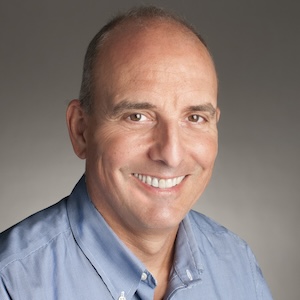
I am a licensed acupuncturist, dietitian, and Chinese herbalist. I completed my Chinese medicine cover charge at NESA in 2006 and have taught Western Nutrition there since 2007.
I am incredibly grateful to my most influential teachers, Sharon Weizenbaum and Toby Daly who showed me, with different modalities, how clinically effective this amazing medicine can be if you look well beneath the surface.
I have treated patients with Saam almost 100% since early 2019 and run a busy clinic in Stow, MA.
Title:
Stepping into Saam – How to Navigate Treatments when “Saam doesn’t work”
Summary:
This discussion is ideal for those who practice the Saam Buddhist monastic tradition of Toby Daly’s teacher. This talk is especially for those new to the system or those who feel they are not getting their expected clinical results. Toby has transmitted a beautifully efficacious heart- centered medicine that successfully treats a wide range of conditions. Evaluating channel pairs can be confusing and sometimes we need to connect deeper and look below the surface to find our diagnostic patterns. When results are not obtained, it can often be because of an error in our diagnosis or treatment. Sloppy diagnosis and inaccurate needling can lead to unsatisfactory results. I will share my experience of how I navigated disappointing outcomes in my 5+ years of practicing this tradition
In This Presentation We Will:
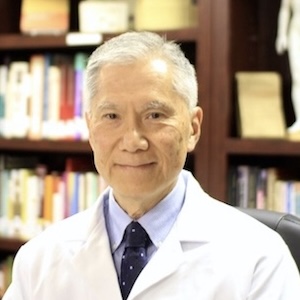
Hon graduated from the Maryland Institute of Traditional Chinese Medicine, had clinical training at the Shanghai College of Traditional Chinese Medicine, studied Chinese herbal medicine at the TAI Sophia Institute, learned Medical Qigong at the International Medical Qigong College, and completed a DAOM program at the Virginia University of Integrative Medicine (VUIM). He’s owner of the Sports Edge Acupuncture Clinic, and an adjunct instructor at VUIM.
Hon first learned Saam Acupuncture from Dr. Tae Chong Choo, his DAOM advisor. Dr. Choo is founder of the Association of International Saam Acupuncture (AISA). During quarterly AISA Zoom meetings, Dr. Choo lectured on Saam as well as on Korean Constitutional Medicine. Hon continues studying with Dr. Choo and has taken Toby Daly’s online classes. Saam has become an integral part of his clinical practice.
Title:
Saam Acupuncture, Korean Acupuncture: History, Theory & Techniques
Summary:
My presentation will include a brief history, theory, and techniques of Saam acupuncture. The PowerPoint slides I’ll share with you belong to my teacher, Dr. Tae Cheong Choo.
My talk will highlight Dr. Choo’s teachings on the “Comprehensive Method” of needling, the Mindpath theory, the 6 Qi and 5-element Physical Building Analogy, and the Three Levels of Human Needs (Mindpath Meridianology) with examples of clinical examples from my own practice
In This Presentation We Will:
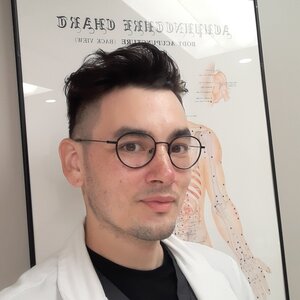
I entered the East Asian Medicine field after a series of acupuncture and herbal treatments were able to permanently resolve a debilitating digestive illness. Since then, I have dedicated myself to empowering others to transform their lives and attain flourishing health with East Asian Medicine.
I received my doctorate at the National University of Natural Medicine in Portland, Oregon, where my training focused on the theory and application of classical medical texts. I then spent four years as part of the Division of Integrative Medicine at the Memorial Healthcare System in South Florida and have taught Korean Acupuncture and Herbal Medicine at Wongu University in Las Vegas. I currently practice in Orange County, California, at a clinic specializing in neurological conditions and autoimmune diseases.
Title:
Cultural, Classical, and Clinical Contexts for Saam Acupuncture
Summary:
This presentation will discuss the theory and application of Saam acupuncture.
We will begin by situating Saam Acupuncture in the broader context of Korean history and Korean Medicine, highlighting the unique features of Korean Medicine and showing how these features are present in Saam Acupuncture. We will go on to review the energetics of Saam Acupuncture channels and prescriptions, with particular emphasis placed on psycho-emotional dynamics through the Three Levels of Human Needs theorized by Kim Hong Kyung (김홍경 金洪卿).
We will explore the application of Saam Acupuncture to treat commonly encountered conditions in the contemporary North American Clinic. Throughout the presentation we will be connecting the system of Saam Acupuncture to classical principles found in the Huangdi Neijing, the Nanjing, the Shang Han Lun, and the Korean Medical text Dongui Bogam.
In This Presentation We Will:
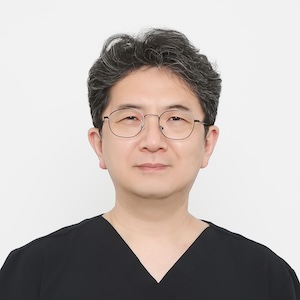
Junghwan Lee is a researcher of meridian-based psychotherapy and the developer of Mind Acupuncture. He holds a doctoral degree in Oriental psychotherapy. He has been researching and clinically using Saam Acupuncture and Eastern and Western psychotherapy for nearly 30 years.
Mind acupuncture is the result of his long-term research. He compares the development of mind acupuncture to the creation of the iPhone. He says that Mind Acupuncture is an innovative treatment method that is completely different from existing treatment methods and is patient-centered, intuitive, easy, and effective like an iPhone. He says that mind acupuncture can actively complement or replace existing Eastern and Western psychotherapy methods.
He is the president of the Saam Acupuncture Society and the Mind Acupuncture Association. He hopes that acupuncture practitioners around the world will learn, use, and study mind acupuncture. He is actively introducing mind acupuncture in various countries. He has a mind acupuncture group on WhatsApp. Through that group, he regularly conducts online workshops.
Title:
Mind Acupuncture: An Expansion of Saam Acupuncture for Rapid Relief of Negative Emotions and Thoughts
Summary:
Mind acupuncture is a Saam informed meridian-based psychotherapy modality. Mind acupuncture is firmly rooted in traditional East-Asian medical theory. The fundamental basis being that qi (energy) instability causes negative emotions and thoughts. Through the utilization of the 5 Shu points and Saam acupuncture techniques, we learn to stabilize the energy of the 5 elements and 6 Qis.
These strategies are extremely efficacious in releasing negative emotions and have the ability to address daily stress, depression, anxiety, PTSD, and insomnia by reestablishing healthy regulation of stressors and emotions.
The approach has three fundamentals: Stating treatment goals, strengthening self-regulation of the meridian system, and interlacing treatment goals with meridian functions.
This method can also have profound efficacy in the dredging of hidden unconscious conflict allowing the liberation of spirit through Qi-transformation and Metaphor techniques.
The primary techniques used in the Mind Acupuncture method that will be taught are Basic Circulation Acupuncture and Saam Acupuncture.
Mind acupuncture is easy to learn and provides quick results, offering liberation from negative emotions and expanding positive affect. Mind Acupuncture has received accolades and recognition when it was introduced to audiences at Oxford University as “The Emergence of New Traditional Acupuncture”, ICMART 2023(Amsterdam), and Dagfa 2022(Frankfurt).
In This Presentation We Will:
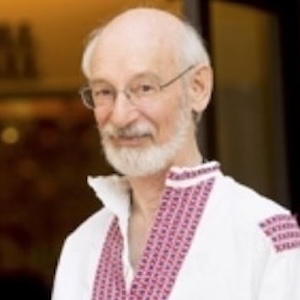
When I finished my Western medical training in 1972, I had never heard of acupuncture. I was offered a job as physician in an acupuncture clinic in 1973 with on-the-job training from a group of Korean practitioners, one of whom, Chae Lew, agreed to accept me as an apprentice. I spent over ten years working and studying with him. Through him I met many of the leading practitioners of Korean acupuncture, who later became teachers for me themselves, including Tae Woo Yoo, the originator of Korean Hand Acupuncture, and Kuon Dowon, the originator of Korean Constitutional Acupuncture.
In 1974 I began over ten years of study with Professor JR. Worsley. I later studied in China and Japan as well as Korea.
From 50 years of study and practice I formulated my own style I call Constitutional Conditional Acupuncture, which I have taught internationally, including 3 times in China.
Title:
Saam and The Varieties of Korean Acupuncture
Summary:
This presentation will explore its history and the many styles of practice it has engendered in Korea as well as elsewhere. The basis of Saam acupuncture is the 4-needle technique. Tonifying, sedating, heating and cooling formulas will be reviewed plus other 4-needle combinations that break the standard rules. These are due to the use of Saam theory in both Constitutional and Conditional aspects of treatment. The differences between these two aspects as they relate to diagnosis and treatment will be explained.
The speaker’s own style of acupuncture follows this approach, and has been taught worldwide including three times in China. There are several of the author’s books that can augment this presentation.
Grasping the Donkey’s Tail
Unraveling Mysteries from the Classics of Oriental Medicine
The Compleat Acupuncturist
A Guide to Constitutional and Conditional Pulse Diagnosis
In the Footsteps of the Yellow Emperor
Tracing the History of Traditional Acupuncture
The Book of Changes In Traditional Oriental Medicine
An edited transcript of classes taught in 1983 and 1984
Closing The Circle
Lectures on the Unity of Traditional Oriental Medicine by Peter Eckman, M.D., Ph.d., M.Ac. (U.K.) and Stuart Kutchins, C.A.
In This Presentation We Will:
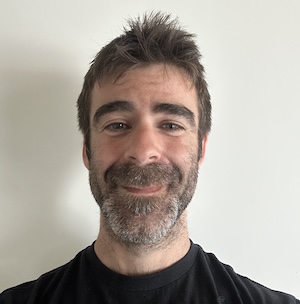
From the beginning of Phil Settels’ study of Chinese Medicine in 2008, he has been drawn to both classical herbalism and orthopedic acupuncture. Upon graduating in 2011 he was asked to help put together a doctorate program at ACCHS, and he was able to build a curriculum focusing on these two areas of specialization. Running the program allowed Phil to walk the path of an eternal student, and he has had the great fortune of studying with amazing teachers in both the herbal and acupuncture domains.
Phil continues to practice, to teach, to run the doctorate program, and to learn. Among his most recent inspirations is the Saam Acupuncture system, as taught by Toby Daly. This has allowed him to use the five-phase and six-conformation principles that guide much of his herbal thought in the diagnosis and treatment using acupuncture, in a way that is beautifully complementary.
Title:
Saam and Jing Fang: Beyond Herbalized Acupuncture
Summary:
This course will explore the 12 archetypes of channel system excess from the Saam acupuncture system, and relate them to classical formulas (Jing Fang). In particular, the herb presentation (yao zheng) and formula presentations (fang zheng) styles of Shanghan Lun herbalism will be emphasized.
The goal is not to establish one-to-one correlations (ie. Spleen Supplementation treatment is equal to Wenjing Tang), but rather specific characteristics of the organ system patterns are related to formulas, so that each organ system pattern could relate to multiple formulas, and combinations of organ system patterns could relate to specific formulas.
In This Presentation We Will:
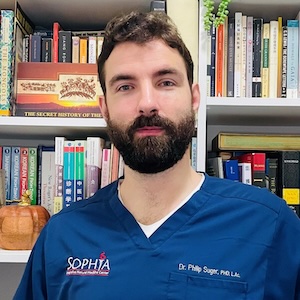
Born in San Francisco, CA and raised in Charlotte, NC. During my freshman year at Penn State, I was introduced to the Dao De Jing which led me down a rabbit hole of ancient Chinese culture. From which I learned about Chinese medicine. Having decided to pursue a career in this field I left for China after I graduated. At first, I was at the Beijing University of Chinese Medicine for an advanced studies program. Upon returning to the states, I enrolled at the Oregon College of Oriental Medicine to pursue my master’s degree.
Afterward I moved back to China to earn my doctoral degree at the Nanjing University of Chinese Medicine. I first began practicing in Houston, TX. With the upheaval of the pandemic my family and I moved to Northern California until I was provided with an offer to come work at an integrative clinic in Connecticut.
Title:
The History and Development of Saam Acupuncture
Summary:
Despite the increased interest in Saam acupuncture there is very little known about its origins and development. This presentation is designed to shine some light on how the modern Saam acupuncture came to be. The first portion of the presentation will describe the environment in which Saam acupuncture developed in detailing the governmental, social, medical and religious influences.
The second major development in Saam acupuncture is the writing of a collection of case studies and commentary attributed to an individual named Jisan sometime after 1742. The third section will delve into what we don’t currently know about the development of Saam acupuncture. The final portion will examine the modern era and the multiple streams of Saam acupuncture that have developed during this period.
In This Presentation We Will:
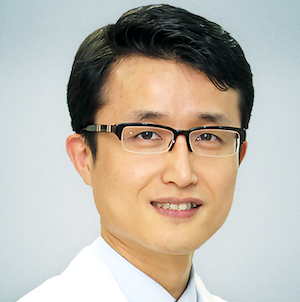
Sanghoon Lee is a professor at Kyung Hee University’s College of Korean Medicine in South Korea. He obtained his MD in Korean Medicine in 1995 and completed his clinical residency at KHU Medical Center in 1998. Dr. Lee is a prominent researcher and practitioner in acupuncture and integrative medicine with numerous research papers and books.
In his role as Director of the International Education Institute of Korean Medicine and Deputy-Director of the East-West Medical Research Institute (a WHO Collaboration Center for Traditional Medicine), Dr. Lee leads efforts to integrate traditional medicine into modern healthcare systems.
Having served as a visiting scholar at Johns Hopkins School of Medicine and UC Irvine School of Medicine, Dr. Lee’s influence globally through lectures and collaborations. Presently, he is deeply engaged in exploring and developing acupuncture mechanisms and their applications in digital healthcare trends.
Title:
Saam Acupuncture Unveiled: Literature Review and Its Clinical Application in Korea
Summary:
Saam Five Element Acupuncture is a Korean meridian-based acupuncture system. Saam focuses on achieving a constitutional systematic balance of organ function, rather than focusing solely on acute and local strategies. The treatments are accomplished by utilizing prescriptions of Five Element transport points. There are various approaches within the Saam Acupuncture model for selecting the primary channel for treatment. The approach I will be presenting employs three criteria to arrive at a three-dimensional treatment.
The criteria include:
1) The primary channel pathway related to the chief complaint.
2) The Zang-Fu influences based on Five Element theory.
3) Deficiency and excess patterns based on the Six Conformation factors.
This lecture aims to provide a comprehensive overview of Saam Acupuncture based on literature reviews and to elucidate its clinical applications in Korea.
In This Presentation We Will:
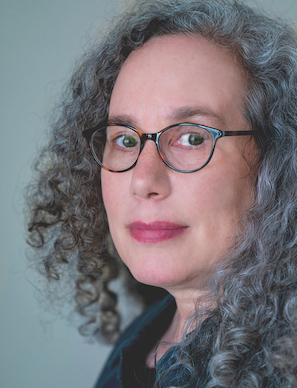
My passion for East Asian Medicine is an ongoing inquiry and deep appreciation for what has shaped medical theory, biases, and strategies. As a perpetual student of medical arts and practice, I am more than a technician; I operate as a critical thinker and a strong collaborator in the healing process. My studies and personal exploration lead me on a continuing journey, alongside my patients, to unravel the mysteries and pursuits that create a life well lived.
Sharon graduated with Honors from Tri-State College of Acupuncture in 2001 and has been practicing in Philadelphia since. Prior to her groupie-like devotion to the Saam community, she was a student of 88th generation Daoist priest Jeffery Yuen for over ten years. She is a general practitioner with a concentration in Saam acupuncture, musculoskeletal dysfunction and herbal medicine.
Title:
Open the Portals – Bearing Witness to What Presents
Summary:
Bearing witness as a health care practitioner requires us to be present and attentive to the truth of another’s experiences. It is also an opportunity to hone our Saam diagnostic skills and enhance our ability to serve. We will be looking at videos and getting seasoned practitioner’s diagnostic observations relating to morphology, affect and temperament from within the Saam lens. Seeing through the eyes of skilled practitioners, the aim is to expand our clinical prowess by being able to better understand, categorize and utilize the rich bounty of diagnostic clues that present in every clinical encounter.
In This Presentation We Will:
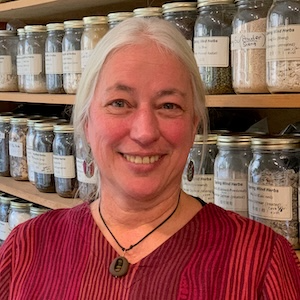
Sharon Weizenbaum has been studying and practicing East Asian Medicine for over forty years. Her interests primary interests have included herbal obstetrics & gynecology, herbal medicine based on the Han dynasty classics (Nèi Jīng, Nàn Jīng, Shén Nóng Běn Cáo Jīng, and Shāng Hán Zá Bìng Lùn) as well
as the Fǔ Xíng Jué Yòng Yào Fǎ Yào and acupuncture based on Han dynasty classic principles. Sharon found that Japanese traditions of acupuncture more faithfully followed these principles and her acupuncture style grew out of her study with Japanese teachers, including Kiiko Matsumoto, Stephen
Birch, and Koei Kuwahara. In 2019, she began her study of Saam with Toby Daly which was followed by a visit to Thomas Sørensen’s clinic in Copenhagen, DK. Five years on from initial contact with Saam, Sharon’s understanding and practice of acupuncture is influenced by all of the above.
Sharon practices in Western Massachusetts, living on a small farm with her farmer daughter Zoe and many farm animals. Sharon is the founder of White Pine Circle, an online educational and community support platform and teaches a two-year comprehensive program called The Graduate Mentorship Program in which she offers her unique approach to classical East Asian herbal medicine with an emphasis on clear diagnostic skills and flexible use of formulas.
Title:
Classical Perspectives on Supplementing, Draining and Flavors in Relation to Saam Acupuncture
Summary:
In this lecture, Sharon will explore the concepts of supplementing, draining and shunting methods based on her understanding and translation of portions of the Huáng Dì Nèi Jīng.
Much of this understanding also comes from her translations of the work of Dr. Zhāng Dàchāng on the Fǔ Xíng Jué Yòng Yào Fǎ Yào, (Assisting Certainty in the Important Methods for Applying Herbs for the Zang Fu). Sharon has discovered that Dr. Zhāng’s writings are aligned with our root classics, the Huáng Dì Nèi Jīng and the Nán Jīng than any writings she has ever come across. These profound views were echoed by Sharon’s studies withThomas Sørensen.
In this lecture, Sharon will discuss what we are doing when we supplement and drain/shunt according to an accurate reading of the text. This requires some understanding of what channels are and how the five phase points function. From this foundation, Sharon will connect our use of flavors in herbal formulas to our work using the four points of Saam. Again, this is based on the classics and Dr. Zhang’s writings.
In This Presentation We Will:
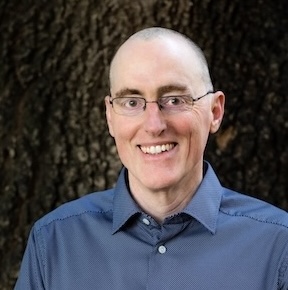
Toby began studying Chinese medicine in 1997 with a Korean monk trained in the Saam tradition. He earned his master’s degree in Traditional Chinese Medicine in 2002 upon completion of training at the American College of Traditional Chinese Medicine in San Francisco and Chengdu University in China.
During his four years of training in San Francisco, he interned with the prominent acupuncturist Dr. Angela Wu and learned to apply the lofty theories he was studying in school into the pragmatic setting of a busy clinic. In 2013, he developed the Chinese Nutritional Strategies app to provide digital access to the wealth of Chinese dietary wisdom.
In 2016, he completed a PhD in Classical Chinese Medicine under the guidance of 88th generation Daoist priest Jeffery Yuen. In 2021, he developed the Chinese Medical Characters app to enable direct access to foundational Chinese medical terms and concepts.
For the past three years he’s been teaching the Saam method as it was taught to him by his teacher.
